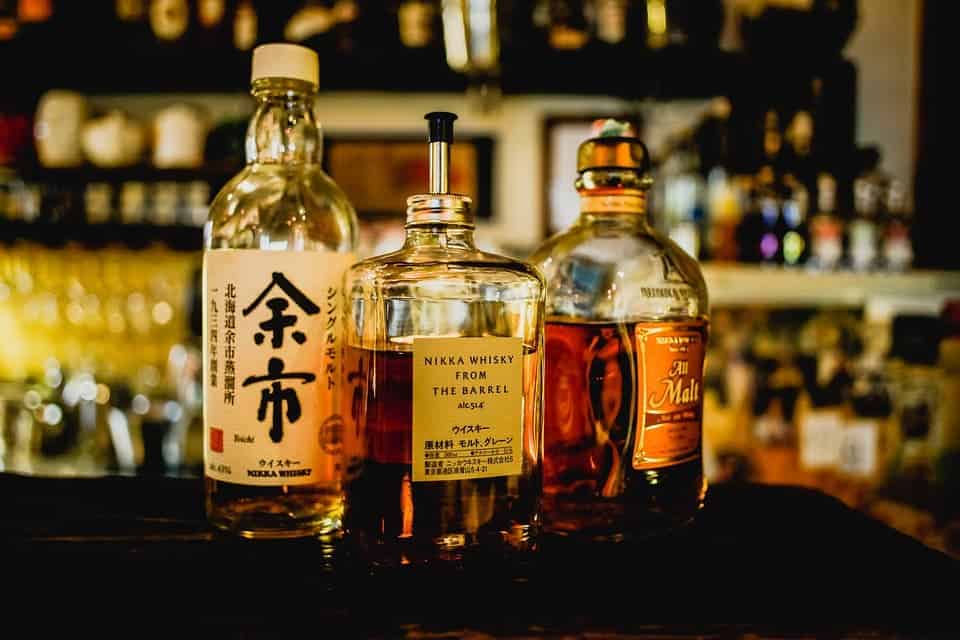
Sometimes, science means a lot of effort and sacrifice — walking days and weeks through inhospitable terrain, documenting what you see and then continuing the research in the lab. Other times, it means analyzing many years of statistical data to draw a conclusion. But sometimes, it means buying 1,000 euro worth of whiskey. From your own money.
“We had to use our own money,” says study co-author Uwe Bunz of Heidelberg University. “You can’t just use state funds, otherwise I think our higher-up administration would be fairly unhappy.”
In a study published in the Journal Chem, he describes how he put the new collection to good use, developing a technique to identify not only its age, blend, taste, and origin — but also spotting a counterfeit. In the US alone, whiskey sales yielded revenues of over $3.1 billion in 2015, so there’s a significant market for applying this method. To make it even more interesting, Bunz says the same method could be applied for wines, juices, and even drugs.
He and his colleagues developed several water-soluble fluorescent dyes. Typically, the dyes would glow a green or blue-green hue under blacklight. But if a bit of whiskey is added, the dye either glows stronger or gets dimmer. By mixing whiskey samples with several dyes in several vials, a pattern of brightness and dimmness starts to emerge, and this is the “fingerprint” of the drink. But it’s much better than a fingerprint.
“From fingerprints, you cannot normally deduce what ethnic background you are, or what your height is, or how old you are,” notes Bunz.
When you start to plot the results on a graph, you start to see patterns forming. Whiskeys of a specific age start to form a group, as do whiskeys of a specific blend status (i.e. single malt). The more whiskeys you put into the graph, the better the system gets because more patterns form.
All in all, they analyzed 33 whiskeys of American, Scottish, or Irish origin. The test itself is quite efficient: for starters, it only requires a very small quantity of liquid. Researchers ran each sample six times, and this “cost” only one milliliter of whiskey. A total of 32 samples can be analyzed concurrently, after 15 minutes of interacting with the dyes.
Of course, the technique isn’t perfect. Researchers report an accuracy of 99%, which means you still have a 1% error. Bunz argues that this is because many characteristics still cluster together because not enough different samples have been added into the system. Also, a “master whiskey library” would have to be developed in a lab, to be made available worldwide.
But scientists say this is a much more efficient method than those currently used for analyzing whiskeys (gas or liquid chromatography, mass spectrometry). The fluorescent dye method is much more accurate, being able to differentiate between several groups and ages of whiskeys, whereas with chromatography, “their discrimination is much more coarse and you cannot resolve the different groups.” The other method is also more expensive and takes a longer time to get going. Bunz estimates that a sampling machine would cost about 10,000 euros to build, and the consumable plates and dyes only cost a few cents. The dyes would take about a month to synthesize, but from a batch, you could make around 200,000 samples.
It’s an interesting study which will definitely have many industry executives lifting their eyebrows, but at this moment, it’s not clear whether industries will actually try to implement it. Bunz says that he hasn’t heard from anyone working with alcoholic drinks, but German juice manufacturer Sonnländer has already expressed some interest. The team will soon start joint experiments.
In the meantime, one problem still remains: Bunz still has 33 different whiskeys at home, from which he only took 1 milliliter. But he says his friends don’t mind.
“I basically have 30 different whiskeys at home,” says Bunz. “But I’m not a whiskey drinker. I’m a red wine drinker, so some of my guests are highly delighted when they see my collection.”
Journal Reference: Jinsong Han, Chao Ma, Benhua Wang, Markus Bender, Maximilian Bojanowski, Marcel Hergert, Kai Seehafer, Andreas Herrmann’Correspondence information about the author Andreas HerrmannEmail the author Andreas Herrmann, Uwe H.F. Bunz, Uwe H.F. Bunz — A Hypothesis-Free Sensor Array Discriminates Whiskies for Brand, Age, and Taste. DOI: http://dx.doi.org/10.1016/j.chempr.2017.04.008


